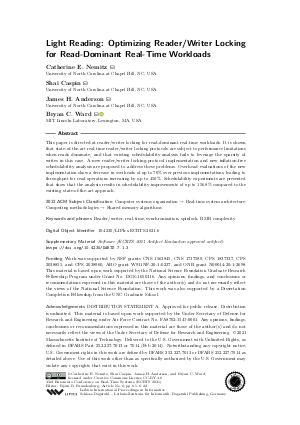LIPIcs.ECRTS.2021.6.pdf
- Filesize: 1.13 MB
- 22 pages

 Creative Commons Attribution 4.0 International license
Creative Commons Attribution 4.0 International license































Feedback for Dagstuhl Publishing